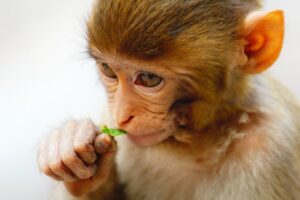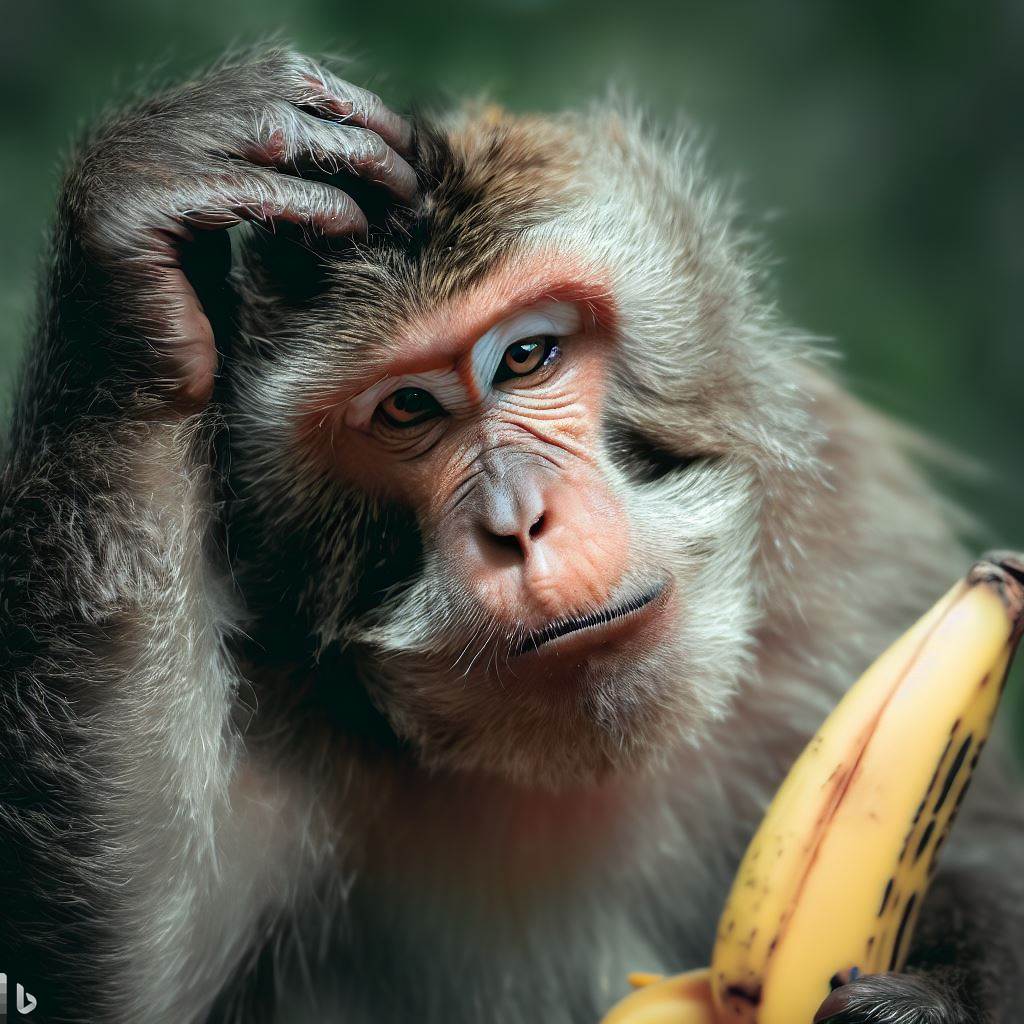Introduction: Monkeys are fascinating creatures that have captured the attention and curiosity of humans for centuries. From their agile movements to their complex social structures, monkeys play an essential role in maintaining the balance of their ecosystems. In this blog post, we’ll delve into the intriguing world of monkeys and explore some strange facts that highlight their significance in the natural world.

- Monkey Gardeners: Did you know that monkeys can be considered nature’s gardeners? In many tropical rainforests, monkeys contribute to the dispersal of seeds through their dietary habits. As they travel through the forest in search of food, monkeys unintentionally drop seeds along their journey. These seeds then germinate and grow into new plants, thus aiding in the forest’s regeneration and diversity.
- Monkey Midwives: While humans rely on doctors and midwives during childbirth, some monkey species exhibit a unique behavior that resembles midwifery. Female marmosets, for instance, assist in the birthing process of their group members by providing support, cleaning the newborns, and even severing the umbilical cord. This cooperative behavior not only strengthens social bonds within the group but also ensures the survival of offspring.
- Monkey Inventors: When it comes to finding food, monkeys have been known to showcase remarkable problem-solving skills and inventiveness. In Japan, a group of macaques has become famous for their innovative behavior of washing sweet potatoes in seawater before eating them. This behavior spread throughout the population, demonstrating their ability to learn from one another and adapt to their environment.
- Monkey Architects: Monkeys and apes, like humans, seek comfort, security, and a sense of belonging in their living spaces. They, too, utilise natural materials available in their environment to create homes, although the complexity and permanence of these dwellings vary greatly across different species.For example, the orangutans, known as the “engineers of the forest,” construct elaborate sleeping platforms or “nests” in trees. Using their environment to the fullest, orangutans bend and break branches, weaving them together to form a sturdy base. They then add more layers for comfort, using softer, leafy branches. Research shows that orangutans might construct multiple nests at different heights, depending on factors like mosquito presence and temperature.Similarly, gorillas, specifically the mountain gorillas, also build nests for resting and sleeping, typically on the ground but occasionally in trees for the younger ones. They gather branches and leaves, creating a circular bed. These nests are used for a single night and abandoned the next day, probably to avoid parasites and predators.
Smaller monkey species like the capuchin also utilise natural materials to create their homes, although in a less structured manner. They usually prefer tree hollows or dense vegetation for sleeping and hiding from predators.
Chimpanzees show fascinating use of natural materials too, not only for building sleeping nests in trees but also for creating tools for foraging. Their “homes” are often temporary resting places, chosen for strategic advantages like access to food resources, visibility of predators, and climate control.
These homes created by monkeys and apes from natural materials are a testament to their adaptability and intelligence. They demonstrate not only a keen understanding of their environment but also the ability to manipulate it to meet their needs – a characteristic that resonates deeply with our own human experience of creating habitats.
- Monkey Fashionistas: In the dense forests of the Amazon, some monkeys sport an unexpectedly fashionable accessory—brightly colored fur patches. The bald uakari monkeys, for example, have a vibrant red face due to their unique blood vessels beneath their skin. Scientists speculate that the striking coloration may serve as a visual signal of good health and fertility, attracting potential mates within their social groups.
- Monkey Linguists: While monkeys may not possess a spoken language like humans, they do communicate through a complex system of vocalizations, gestures, and facial expressions. What’s even more intriguing is that some monkeys have demonstrated the ability to understand basic human syntax. Researchers studying Campbell’s monkeys in the Ivory Coast found that these primates can combine different vocalizations to create specific meanings, indicating a rudimentary understanding of grammatical rules.
- Monkey Astronomers: While we often associate stargazing with humans, monkeys have also shown a keen interest in celestial bodies. In a study conducted in Brazil, researchers observed capuchin monkeys looking up at the night sky and displaying behaviors suggestive of astronomical curiosity. These inquisitive primates seemed particularly fascinated by the moon, often stopping their activities to gaze at it. This intriguing behavior raises questions about the extent of their comprehension of the universe around them.
- Monkey Pharmacists: Believe it or not, monkeys have exhibited behaviors that resemble the practice of traditional medicine. In certain regions, primates have been observed rubbing certain plants or insects on their fur or consuming them for medicinal purposes. For example, capuchin monkeys in Costa Rica have been seen rubbing the toxic millipede secretions onto their bodies, possibly using it as an insect repellent or to treat skin parasites. These fascinating self-medication practices suggest that monkeys possess a rudimentary understanding of the healing properties of certain natural substances.
- Monkey Archaeologists: Monkeys have even left their mark on human history through their unwitting involvement in archaeological discoveries. In the ancient city of Uruk in Mesopotamia, modern-day Iraq, archaeologists uncovered cuneiform tablets that depicted monkeys. These tablets, dating back to the third millennium BCE, indicate that monkeys were present in Mesopotamian culture and were likely imported from distant lands, possibly as pets or curiosities.
- Monkey Art Enthusiasts: Art appreciation is not limited to humans, as monkeys have demonstrated an intriguing interest in artistic endeavors. In a study conducted by researchers at Kyoto University, Japanese macaques were provided with paper and colored markers. Surprisingly, some of the monkeys engaged in spontaneous painting, creating abstract designs with the markers. While the intention behind their artwork remains unclear, it showcases their capacity for creativity and the potential overlap between human and primate aesthetics.
- Monkey Weather Forecasters: Some monkey species have displayed a remarkable ability to predict weather patterns. In regions where capuchin monkeys reside, locals have observed their behavior as a reliable indicator of impending rain. These primates tend to seek shelter and become noticeably less active before a rainstorm. Farmers and villagers have learned to pay attention to the actions of these “weather monkeys” as a natural prediction method, helping them plan their agricultural activities accordingly.
- Monkey Social Networkers: Monkeys are not immune to the allure of social networking, albeit in a different form. A study conducted on rhesus monkeys revealed that they have distinct social hierarchies and maintain relationships through grooming and affiliative behaviors. These interactions form a complex network that resembles human social connections. The study also found that higher-ranking monkeys had more “friends” within their social network, highlighting the importance of social relationships and their impact on individual success within monkey communities.
Conclusion: As we delve deeper into the world of monkeys, we discover even more intriguing and unusual facts that highlight their significance in the natural world. From their interest in astronomy to their artistic inclinations, monkeys continue to surprise us with their intelligence, adaptability, and diverse behaviors. By understanding and appreciating these strange facts, we gain a greater understanding of the intricate web of life and the importance of preserving the ecosystems in which monkeys play such vital roles.


